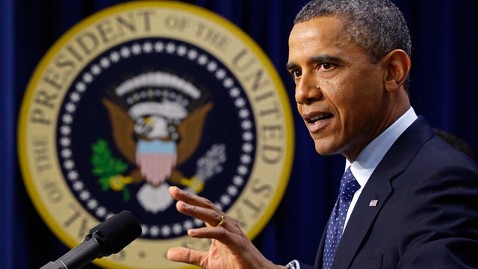HONOLULU — The place where President Obama vacations each winter is farther from Washington than almost any other place in the United States. So, it is not terribly surprising that less than 45 minutes after Congress passed a bill averting the “fiscal cliff” on Jan. 1, Obama was racing back here.
The president’s vacation with his family and friends had already been cut short by the protracted, painful negotiations in Washington over taxes and spending. Obama was eager to get away from it all and enjoy a few final days of rest before the next round of legislative battles begins.
“I think Hawaii for him is a place where he gets to recharge both physically and emotionally. The schedule is one that’s relaxing. The climate is warm like he likes it. And he’s surrounded constantly by family and the friends he grew up with,” said Robert Gibbs, Obama’s former press secretary and a longtime adviser. “It’s the perfect elixir for having had a long and busy year in national politics.”
The president was scheduled to leave Hawaii late Saturday, returning to Washington on Sunday a little before noon. He will have spent a total of nine days here, over two separate trips, and roughly 40 hours in the air going back and forth.
“Like any parent, the president enjoyed spending as much time with his family over the holidays as he could,” White House press secretary Jay Carney said.
The president first flew here Dec. 21, urging lawmakers to drink some eggnog and cool off over the Christmas holiday. Obama, his wife, Michelle, and their daughters, Malia, 14, and Sasha, 11, rented a house overlooking the beach in the town of Kailua, on the east side of Oahu, Hawaii’s most-populous island, where Obama was born and spent much of his youth.
As has become his custom, Obama spent his time eating at Hawaii hot spots with family and friends, golfing with buddies for six-hour stretches and hanging out at home and around Oahu with his girls. He spent his first night in Hawaii out until 11:30, dining at Morimoto Restaurant Waikiki, owned by Masaharu Morimoto of “Iron Chef” fame.
The next day began with a memorial service for Sen. Daniel K. Inouye (D-Hawaii), whom Obama had previously called his “earliest political inspiration.” Following the service, which was at a veterans cemetery known as the Punchbowl, for the topographical imprint left by volcanic eruptions tens of thousands of years ago, Obama and his wife walked about a half-mile southeast to visit the grave of his grandfather Stanley Dunham, who served in World War II.
Obama went for a hike with his family later that day and then spent part of Dec. 24 with his family at the beach. Many of the president’s activities were confined to the Marine Corps base here, about a 10-minute drive from his rental home.
The Obamas’ Christmas activities are an established routine. On Christmas Eve, Obama calls members of the armed forces and his wife calls children tracking Santa’s whereabouts, before the family sits down for dinner. The next morning, they open Christmas gifts, eat breakfast and sing carols. Later in the day, the president and his wife meet with a few hundred service members at the Marine Corps base.





















